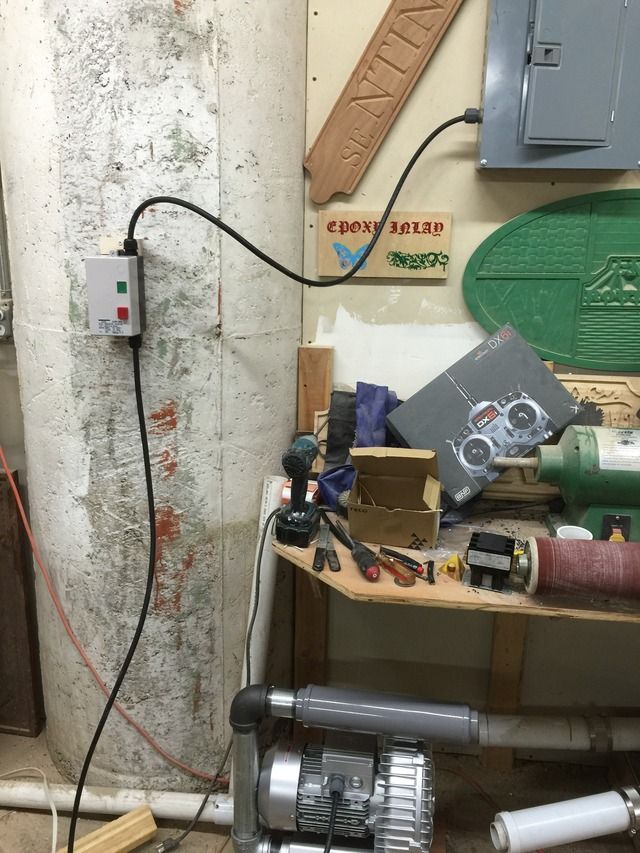

Originally Posted by
Mark Farris

Wow, I missed a lot while I was at the day job.
Andrew, I do a lot of varied sized work. My plenum is 3/4" HDPE with 4-2x4 zones with the 4 in the "Y" direction. Each of those zones are fed with 2" pipe and a Valtera sliding valve from a 3" main. Each zone has 3 supply ports which will have individual "plugs" effectively giving me the option of 12 zones. The plenum grid is sized to accept Allstar gasketing. I have chosen to switch all four motors separately to give me complete control of how many and which motors to use.
Jeff, I like the thermometer idea...hadn't thought of that. My vac box has separate chambers and check valves for each motor. I am using standard 2" PVC check valves which I split in half and mount to the individual vac ports on the side of the box. These will be "tee'd" into a 3" main with will be connected to a filter(next project) and then connected via flexible connection to the Shopbot 3" main.
Michael, Good information. I meant ground but was in a hurry and had another voice in one ear and typed neutral.
Ron, You hit my question on the head. I had thought about separate fusing but wasn't sure. I have a fairly good understanding of general shop wiring and common sense was telling me there was a problem going from #10 wire to smaller, and that running a 7 amp motor on a 30 amp breaker just seemed wrong. I think your idea of 8-10 amp fuses between the #10 wire and the individual switches confirms what I was thinking. I also purchased lighted switches so I will know when a fuse blows.
I am planning an inline filter between the vac box and the Shopbot main line made out of a section of 10" PVC pipe, 3/4" sheet PVC, and a shop vac filter. I will post some pics of all this mess when I get a minute. Maybe I have over-thought all of this, but I like to try to be thorough (my wife calls it anal), and I remember Brady Watson telling others to make it your own way and learn what works for you. I appreciate all the information from all contributors to the Black Box sections of the forum and hope that maybe my ideas can contribute as well.
Mark
So Ron, and Mark, you are taking all of the motor's and using one wire from each motor and essentially connecting that to the 10 gauge wire? Then the other side/wire goes to the switches? Did anyone answer where ground comes into play here?
I have a 220v 30A breaker coming from my shops panel, and it has a plug receptacle that I plug various machines into. Limited on breaker space so I have to plug/ unplug everything and can't have it permanently wired.
Could I run a setup like this:
Motors- 1 wire from each motor to #10 wire, other wire to: > lights > switches > fuses > #10 wire with plug > 220V receptacle > main shop panel. Running a ground from the motors all the way to the #10 wire with plug, which has already been connected from my main panels ground.
PRS Alpha 96" X 48" w/ 12" Z
4hp Spindle
6" Indexer
Aspire 8



 Reply With Quote
Reply With Quote




